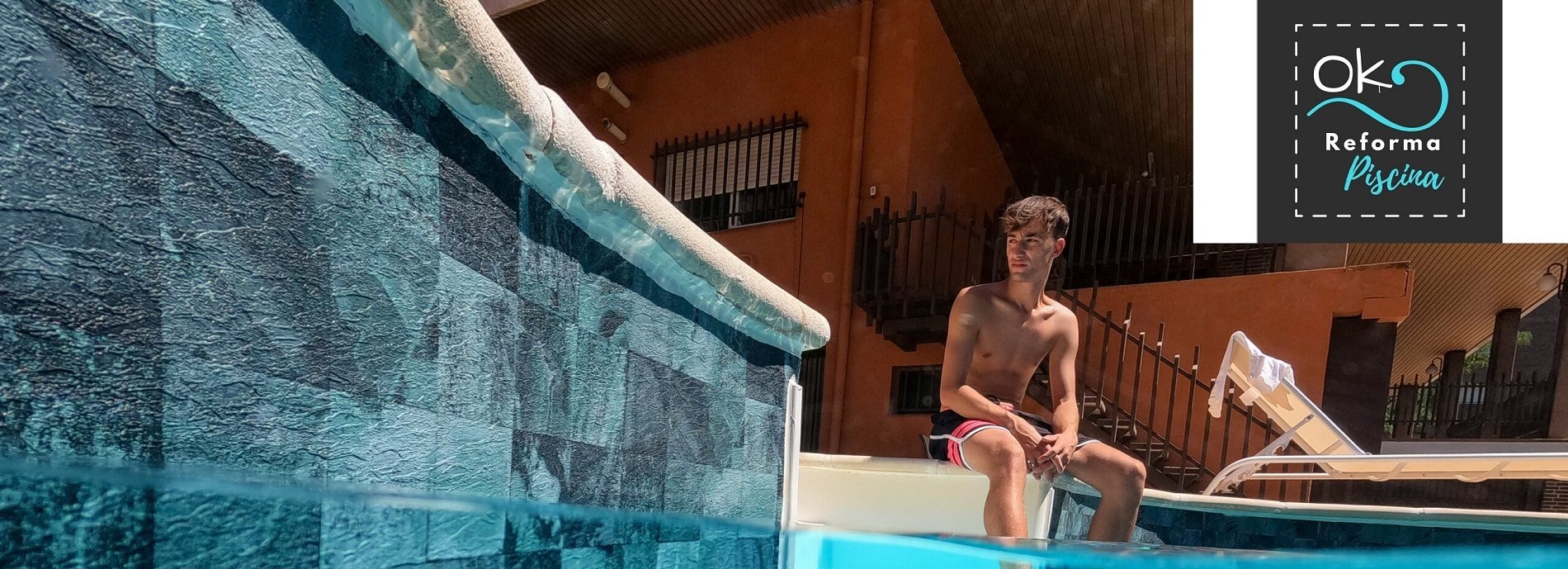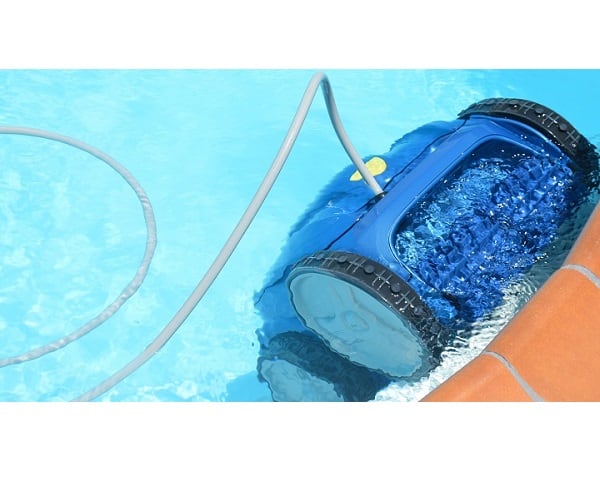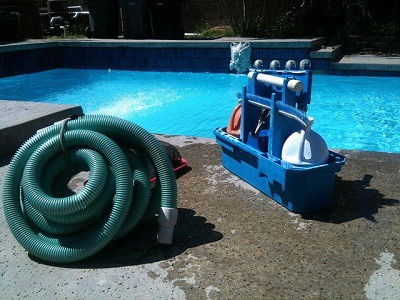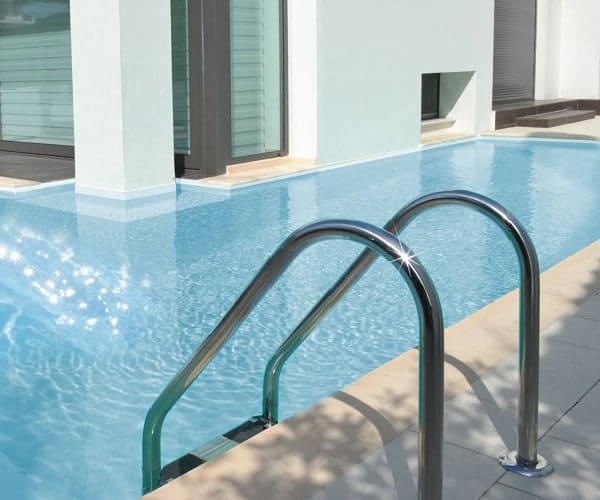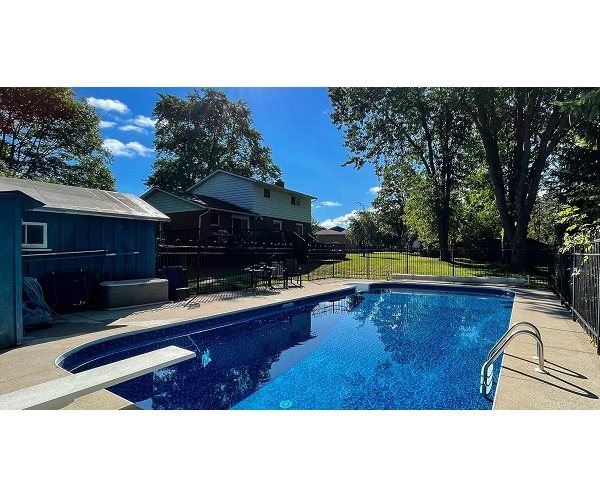
Table of contents of the page
En Ok Pool Reform and within what is the Maintenance Blog We tell you all about when it comes to how to clean a very dirty liner pool since there are several steps that must be taken to do the job well.
Remove large debris from the pool with a net

A swimming pool is a great addition to any home, providing a refreshing place to cool off on a hot day. However, pools require regular maintenance to keep them clean and safe for swimming. One of the most important tasks is to remove large debris from the pool with a net.
This helps prevent the buildup of dirt and leaves, which can quickly turn your pool into a breeding ground for bacteria.
Brush the walls, pool floor and waterline

Most pool owners know that it is important to brush the walls and floor of their pool regularly.
Doing so helps remove dirt, debris, and algae that can build up over time. However, many people don't realize how important brushing can be.
- Not only does it help keep the pool clean, it also helps prolong the life of the pool liner.
- When dirt and debris build up on the siding, it can cause it to stain or fade.
- Additionally, algae can corrode the coating, causing it to deteriorate.
- By regularly brushing the walls and floor of your pool, you can help keep it looking its best for years.
How to clean liner pool walls
Cleaning the pool walls is essential for good pool maintenance. Keeping the walls of your liner pool clean can be difficult, as they tend to accumulate dirt and algae over time. However, with the right tools and techniques, it is possible to keep your liner pool sparkling clean. Here are some tips on how to properly clean liner pool walls.
1. Start by brushing the wall with a soft brush or sponge to remove any loose debris from the surface. A long-handled brush can be useful for hard-to-reach areas of the wall. Next, use a vacuum cleaner with an attachment designed for swimming pools to remove any dirt and sediment that may be stuck to the wall surface.
2. Be sure to use a chlorine-based cleaner designed specifically for pool walls when cleaning the liner. This will help remove algae and bacteria that may be growing on the wall surface. Apply the cleaner generously and scrub it with a brush, going over the entire wall. Once you're done, rinse the wall thoroughly with water.
3. After rinsing off all cleaner, apply a protective coat of wax or other sealant to protect from future buildup of dirt, algae, and bacteria. Use a soft cloth or brush to apply an even coat over the entire surface of the pool wall, paying special attention to joints and corners as they can be problem areas for buildup.
4 Finally, for freshwater pools, check the pH levels of your pool to make sure it is balanced and safe. If necessary, add chemicals such as chlorine or other agents necessary to maintain a healthy balance in your pool water. Maintaining the proper pH level will help keep the coating clean and prevent future buildup.
By following these steps, you can easily ensure that your liner pool walls stay clean, safe, and looking great all year round. With regular care and maintenance, you can keep your pool walls in top condition for years.
Vacuum the bottom and walls of the pool
Vacuuming the pool is a tedious task, but it is worth it to have a clean and healthy pool all summer long.
It is important to vacuum the pool regularly to remove the smallest particles of dirt and debris.
In this way, once all surfaces have been cleaned, vacuum and brush away any particles left at the bottom of the pool.
How to vacuum the bottom of a very dirty liner pool
- Start by vacuuming the bottom of the pool, working in a spiral from the center outward.
- Be sure to empty the vacuum bag frequently.
- Next, vacuum the walls of the pool. Start at the top and work your way down, using a back-and-forth movement.
- Pay special attention to areas that seem to accumulate dirt or debris.
Empty and refill the pool with fresh water
It is recommended to empty 1/3 of the pool water every 1-2 seasons and empty and fill it again every 5 years since the pool water becomes saturated and therefore the chemicals do not have an effect.
This can be done with a submersible pump or by emptying the water into a nearby drainage system. Next, you will need to clean the pool, paying special attention to the walls and floor.
Check the condition of the pool liner
Also, check for punctures when filling the pool; If there are holes in the lining, they must be repaired immediately before moving forward

ALL the INFO about reinforced sheets for swimming pools CGT Alkor
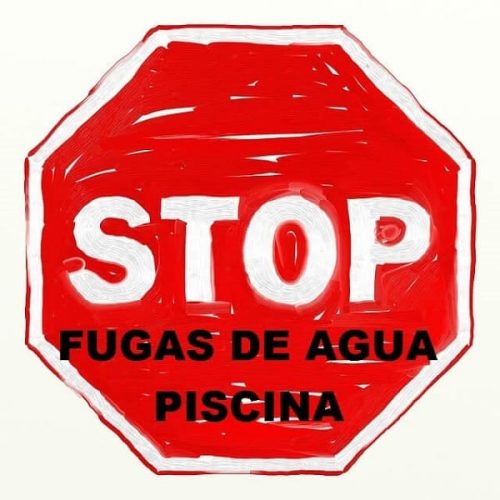
Causes of water leaks in swimming pools and how to detect them
Clean pool liner after emptying the pool
How to clean the coating of a very dirty pool liner
- After brushing, you can start cleaning the pool with a special liner cleaner and a sponge or soft cloth.
- This will help break down any oily substances, scum, and other contaminants that have built up over time.
- Rinse the pool well before refilling it with fresh water.
- There are also special disinfectant solutions that can be used to keep the pool free of bacteria and other harmful organisms.
How to fill the pool

What to do after filling the pool water?

Can you buy water to fill a pool? Find out what the water is worth to fill the pool price
The time it takes to fill the pool will depend on its size and the capacity of your hose.
- The first step is to empty as much of the existing water as possible. This will help reduce any remaining contaminants in the pool and make it easier to remove suspended particles.
- You should also brush all surfaces with an appropriate pool brush or vacuum designed specifically for pools to help remove stubborn dirt.
Check pool water values
To ensure well-balanced water for swimming, add chlorine flushes, pH reducers/increasers, algaecides, and other chemicals as needed according to your pool care routine.

What pool water values can we NOT neglect?

What is the pool pH level and how to control it
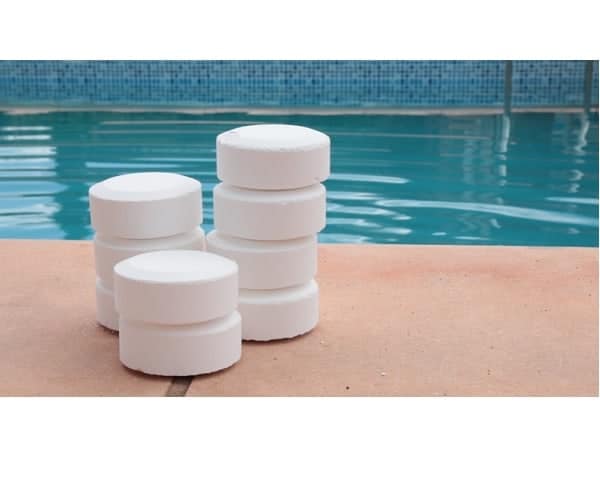
What are the essential pool chemicals for maintenance?
Once you have completed these steps and filled the pool with fresh water, you will need to primarily check the pool's pH and disinfectant levels (chlorine or whatever method is used) to ensure they are balanced.
As a reminder, any unbalanced pH level could cause skin irritation or long-term damage to bathers' health if not used. If the pH levels are too low, you can add a small dose of alkalinity to the pool to raise it.
Add 1 gallon of chlorine to the pool for every 10.000 gallons of water when refilling the pool
Finally, it is important to add a shock treatment or chlorine tablets to the pool water to keep it clean and free of algae. This will help prevent future dirt or stains from forming on the liner.
Keeping a pool sparkling clean requires regular attention and care. An important task is to keep the water properly chlorinated.
This helps eliminate bacteria and other microorganisms that can cause illness.
The general rule of thumb is to add one gallon of bleach per 10.000 gallons of water.
This amount may need to be adjusted based on pool size, use, and location. For example, pools located in sunny areas may need more chlorine, as UV rays can break down the chemical more quickly.
Additionally, heavily used pools may need the chlorine level checked and adjusted more frequently.
Circulate water for 24 hours
It is important to circulate/filter the water for at least 24 hours after adding chemical to the pool.
Safety when cleaning a liner pool
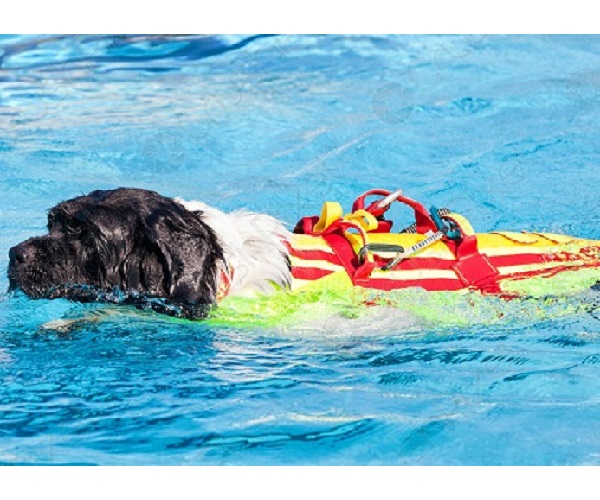
Pet pool safety: tips to avoid and how to act against drowning
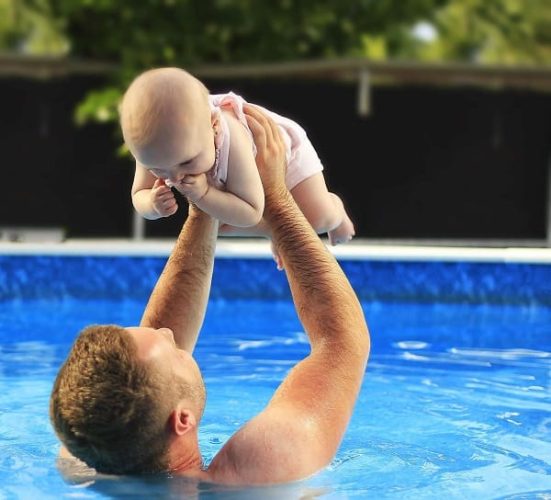
Pool regulations, rules and safety tips
It is also important that safety precautions are taken during the cleaning process of a very dirty liner pool.
Wear protective glasses and gloves when using strong chemicals, such as bleach, to avoid getting your skin or eyes on them. Make sure the area around the pool is well ventilated and take extreme care when using a vacuum cleaner near power outlets or electrical connections.
If you take the necessary steps to properly maintain and clean your liner pool, you can be sure that it will look its best for many years.
Lastly, it is important to maintain your pool regularly through cleaning and chemical treatments.
Maintenance needed for a reinforced liner pool
Cleaning a pool liner pool

What pool water values can we NOT neglect?
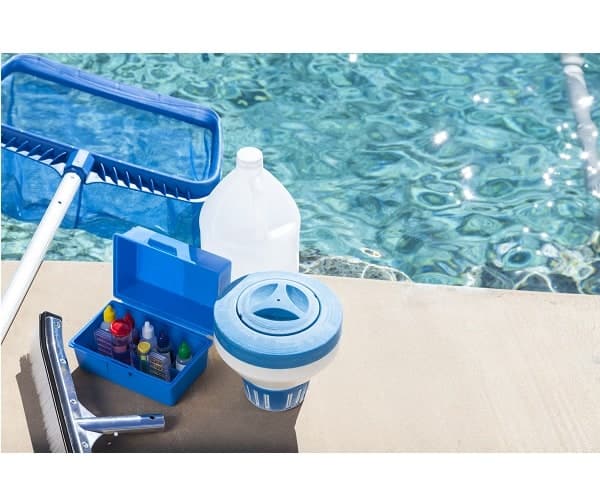
Useful guide to know how to clean the pool
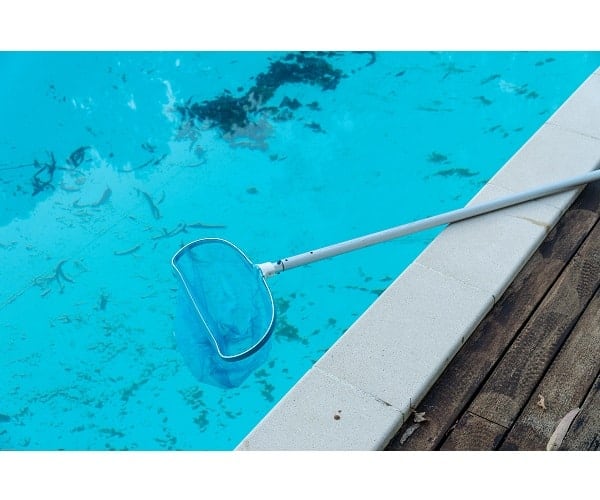
Guide to maintaining a pool with water in perfect condition
This will keep it looking good and help protect bathers from potential harm.
Regular maintenance will also help prolong the life of your pool liner, reducing costly repairs or replacements in the future. With proper maintenance and care, you can enjoy a clean, safe pool for many years.
Lastly, be sure to perform regular maintenance and inspection of your pool to detect any other problems that may arise. This includes cleaning debris from inside the pool, checking for leaks, inspecting the pump and filter system, and checking that all chemical levels are within the proper range.
